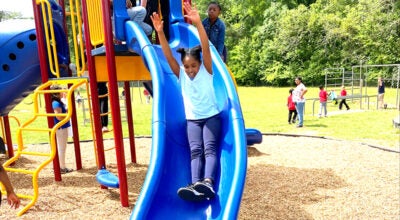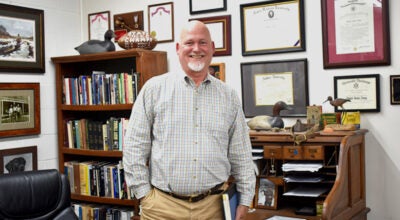Morton turns unlikely hobby into dream come true
Published 1:00 pm Wednesday, May 4, 2022
|
Getting your Trinity Audio player ready...
|
VALLEY — Guest speaker Hugh Morton on Monday told members of the Valley Lions Club that mountain climbing had not been something he’d seriously thought about when he was growing up in Valley in the 1950s and 1960s. He wouldn’t take up hiking until he was in his early thirties. He was a banker in metro Atlanta area at the time, and a doctor had recommended for him to take up hiking as a way to head off rising high blood pressure. Morton took that advice and became affiliated with a group known as the Nantahala Outdoor Center (NOC) in Bryson City, North Carolina. He went on hiking trips to places like the Grand Canyon and Pike’s Peak.
He loved those excursions and wanted more. In 1986, he took a trip to Nepal with the group to walk some of the lower mountains in the Himalayas. It was on that trip that he got to see Mount Everest for the first time. He writes about that experience in his book, “Reflections on High Places.”
For the next five-and-a-half years, Morton was obsessed with going back to Nepal and climbing Everest.
In the first trip to Nepal, he had reached the summit of 18,514-foot Gokyo Kalaphathar. Two years later, he and older brother David Morton made it to the top of Mount Kilimanjaro, Africa’s tallest peak and in 1989 summited Mont McKinley (a.k.a. Denali) the next year. At 20,310 feet, Denali is the highest mountain in North America.
Such excursions allowed him to befriend serious hikers, and it was those relationships that opened the door for a chance to climb Everest, the world’s tallest peak at 29,032 feet and also the most dangerous climb to attempt. More than 150 people have died in an effort to make it to the top and back down again.
In early 1992 one of his hiking friends, Mike Stewart, called to tell him there was room for him on a team that would be taking on the Everest climb that spring. Mike couldn’t make it that time but recommended him to a team led by Everest veteran Todd Burleson. An opportunity was there, but there was a hurdle in convincing wife Ellen that he needed to go. After all, he’d be gone for 10 weeks, and it would be an expensive trip to take. Ellen had taken some pride in her husband’s accomplishments in reaching the tops of Kilimanjaro and Denali and Everest was the tallest of them all.
“I knew she would be pleased and proud of me if I was to somehow able to reach the summit,” he wrote.
To fund the trip, Morton took out a second mortgage on their home and trained extremely hard to be in the best physical shape he could be in. He was 43 years old at the time and needed to be in tip-top shape to have a chance in making such a tasking climb. There was also the mental, psychological challenge of dealing with a recurring dream he’d been having of falling near the Everest summit. And that did happen, not on the way up but on the way down.
The dream may have saved his life. It caused him to think about what to do if he were to be in such a predicament.
“I knew now what to do,” he writes in his book. “I had determined a procedure that I had practiced in my mind over and over for the past year.”
Many hikers die on falls on the way down from the top. One false step can easily send a climber several thousand feet down the mountain.
“I carefully raised up on my hands and feet and with my crampons firmly planted to each side. I held my ice axe with the pick down in the ice and carefully inched slowly up the slope in crab-like fashion until I finally reached the crest of the approximately two-foot-wide ice ridge,” he writes.
He knew he was back to safety when he heard fellow climber Pete Athans yell out “That’s a damn good way to make a widow out of your wife!”
On May 15, 1992, Hugh Morton became the first person from the Southeastern U.S. to reach the summit of Mount Everest, the world’s tallest peak. At age 44, he became the 67th person in the world to reach the summits of the tallest peak on the earth’s seven continents. Everest was the third of the big seven he’d climbed, the first being Kilimanjaro in 1988 and Denali in 1989. The four that remained were Mount Aconcagua in Argentina, Mount Elbrus in Russia, Mount Kosciusko in Australia and Vinson Massif in Antarctica.
Morton made it to the top of Aconcagua during the Christmas/New Year’s holiday in 1995-96, to the top of Elbrus in 1998 and Kosciusko and Vinson Massif in 1999.





